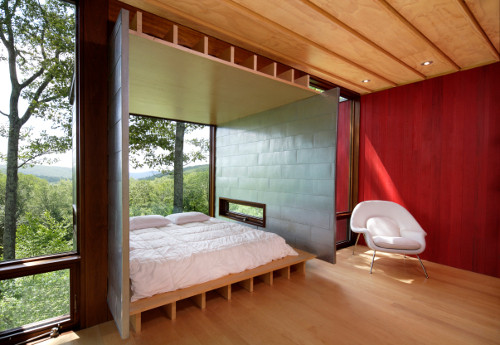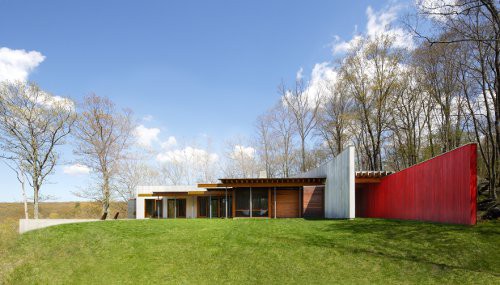
Photo: Matt Wargo
About a week after the death of Steve Jobs, I sat down for an interview with Peter Bohlin, architect of Apple's spectacular glass-walled retail stores. The subject of our interview was a new house designed by Bohlin in the Connecticut woods, but of course I could not help but ask about Jobs. "Steve helped me in these years to drive even harder," Bohlin told me, speaking of Jobs's relentless push for excellence. I had noticed in one of the countless postmortem articles a listing of Jobs's patents, and this included the glass circular stair of the Apple stores. Had Jobs actually designed that? Bohlin just smiled. "What do you think?"
I retell the anecdote not as a reflection on Jobs but Bohlin, who is one of the most self-effacing "big" architects I've encountered. Quite possibly you have never heard of him, though he was the winner of the AIA Gold Medal. (Without those Apple stores, you almost certainly would not have heard of him.) His firm, Bohlin Cywinski Jackson—and what a mouthful that is—was founded not in some major metropolits, but in Wilkes Barre, and is still based there.

Photo: Matt Wargo
A fine example of Bohlin's modesty put into architectural practice is the Edge House, the project we sat down to speak about in the first place. As I write in a story about it for Metropolis:
When you finally arrive, you will find a crescent-shaped bar that arcs gently around an open meadow, its far end projecting over an escarpment and out toward a view of the Housatonic Valley (the titular “edge”). The scene is dramatic, but the house is emphatically modest: its single story is faced in inexpensive cedar, and it is set behind an overhang so deep that the front facade has practically no formal elevation to speak of. The building asks you to look not at itself, but at its surroundings.The crescent form of the house is driven by the path of the sun, but it's also noteworthy in that one of the clients is an engineer who works at the nearby Watson Research Center, the gently curving intellectual laboratory designed by Eero Saarinen for IBM.
A tour of the house culminates in a bedroom that cantilevers out over a precipice, its rear wall a broad glass plane that opens out onto a dramatic view of the Housatonic Valley. It is an elemental space, a room with nothing but a bed—simplicity itself, a most immodest modest space.

